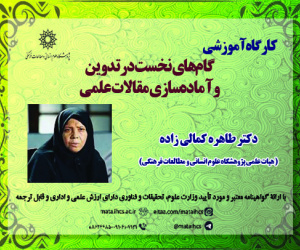استفاده از ملاط های بهینه شده با مواد دورریز در تثبیت بدنه و کف قبور موزه عصر آهن تبریز (مقاله علمی وزارت علوم)
درجه علمی: نشریه علمی (وزارت علوم)
آرشیو
چکیده
ملاط های پایه آهکی به دلیل ویژگی های قابل قبولی که نسبت به رطوبت دارند؛ از دوران گذشته در امر حفاظت و مرمت بسیار مقبول بوده اند. در این میان، مشکل رطوبت صعودی در بیشتر گورستان های باستان شناسی که با حفظ بقایای حاصل از کاوش (همانند بقایای استخوانی و اشیای مدفون شده) در محل، تبدیل به سایت موزه شده اند، وجود دارد. لذا به نظر می رسد یکی از بهترین روش ها برای کاهش صدمات رطوبت، باتوجه به نیاز ضروری به تثبیت بدنه های درحال ریزش و ایزوله نمودن کف گورها، استفاده از ملاط های سازگار باشد. این پژوهش که روی گورها و بقایای اسکلتی در سایت موزه عصر آهن تبریز تمرکز دارد، با هدف تثبیت بدنه گورها و همچنین قطع ارتباط اسکلت های تاریخی با زمین و رطوبت صعودی، اقدام به بهینه سازی ملاط های پایه آهکی با استفاده از پوزولان های طبیعی حاصل از مواد دورریز (پوسته برنج و فضولات حیوانی و چوب به صورت خاکستر) کرده است. نتایج حاصل از آزمون های فیزیکی (چگالی سنجی، تخلخل سنجی، میزان جذب آب، موئینگی) و آزمون های استقامتی (آزمون های پیرسازی تسریعی شامل: چرخه های تر و خشک شدن، انجماد و یخ گشایی و چرخه نمک و دوام داری) روی فرمولاسیون های مختلف ملاط، نشان داد ترکیباتی که با پوزولان خاکستر فضولات حیوانی ساخته شده اند، در مقابل آزمون های استقامتی و سنجه های فیزیکی مقاومت بهتری دارند؛ باتوجه به نتایج بیان شده، از ملاط منتخب در حفاظت و مرمت بدنه و کف گورهای سایت موزه عصر آهن تبریز با تثبیت بدنه ها و ایجاد حایل حفاظتی استفاده می شود. نتایج این اقدام پس از 3 سال، رضایت بخش تفسیر شده است. اما با توجه به عدم قطع رطوبت صعودی مشکلاتی برای قبور به وجود آمده است و اقدام عاجل و فوری قطع رطوبت صعودی بر اساس مطالعات هیدرولوژی است.Utilization of Optimized Mortars by wastes materials in the Stabilization of the Body and Floor of the Graves of the Iron Age Museum in Tabriz
Lime-based mortars have been highly acceptable and preferred for conservation and restoration since a long time ago for their acceptable features towards moisture. Meanwhile, there is an ascending moisture problem in the majority of the archaeological sites having been converted into museum with the conservation of the remnants resulting from excavations (such as bone remnants and buried objects). Accordingly, it seems that use of compatible mortars is one of the best methods for reducing the moisture’s damage, considering the urgent need for the stabilization of the graves’ collapsing bodies and isolation of their floors. The preset study concentrates on the graves and skeleton remnants in Tabriz Iron Age Museum Site and aims at stabilization of the graves’ bodies as well as reburial of the historical bones and preventing them from exposure to ascending moisture through the use of lime-based mortars optimized by natural pozzolans, rice husk ashes, manure and wood. The results obtained from the physical tests (densitometry, prorosimetry, water absorption analysis and capillarity) and strength tests (accelerated aging experiments including wetting and drying cycles, freezing and defrosting and salt cycle and endurance) on various mortar rates indicated that the combinations made of pozzolans and manure ash feature better physical endurance properties as evidenced in the strength tests. According to the above findings, the mortar reinforced with the manure ash was selected for the conservation and restoration of the body and floor of the graves in Tabriz Iron Age Museum Site. The results of such measures were found promising after the passage of two years.









